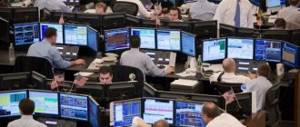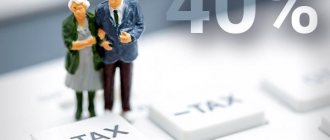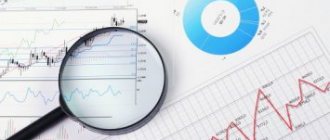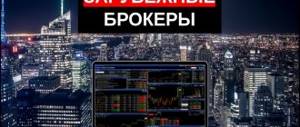What are high risk investments?
A high-risk investment is an opportunity to make a profit that, due to the inherent volatility of the asset, increases the risk of losing money. Sometimes high-risk investments have greater potential returns than more traditional investments, but they come with an equally increased risk of experiencing losses.
While some investments may be considered riskier than others, it is important to remember that trading and investing itself involves risk. As a result, you should ensure that you are comfortable with and understand the risks associated with the financial markets.
High risk, high return means that an investment has a higher degree of risk but also comes with increased potential income. High risk, high return is sometimes called the risk-return trade-off, and is a theory that states that the potential return on an investment is higher when there is an associated increased risk to that investment.
HYIP
Translated from English, HYIP is a highly profitable investment program. But recently, this is the name given to any suspicious project that promises quick earnings at minimal cost.
Often, organizers come up with some story to justify the promised mountains of gold, but upon closer examination, these legends do not stand up to criticism. Among thousands of similar sites, you can point your finger at any one, register, deposit money and expect that you will have time to withdraw your profits before the collapse of the pyramid.
Any pyramid exists as long as the new clients attracted provide payments to past investors. The higher the promised percentage, the faster the money will run out. There were examples when hype lasted less than a day. If you're lucky and leave the project on time, you'll probably earn up to several thousand percent and get a lot of unforgettable experiences in the process.
Understanding the Risk/Reward Relationship
The risk-reward ratio is used by traders to compare the expected return of a particular trade or investment with the amount of risk they will be exposed to over the course of that trade or investment.
As a result, the risk-to-reward ratio can be used by traders to determine the level of potential losses, as well as to assess the potential for profit.
A risk-to-reward ratio greater than 1.0 means that the risk is greater than the expected return, and a ratio less than 1.0 means that the expected return is greater than the potential risk.
Binary options
It just seems that everything is simple. The main principle is “all or nothing”, which well reflects the essence of binary options. If you do not follow any strategy, but simply place bets at random, then you can lose money several times faster than on Forex. On the other hand, you can earn more – up to 85% in just one minute.
High-risk investments and high-risk trading transactions
Investing and trading are two different ways to access financial markets. When investing, you buy an asset such as a stock. When trading, you use financial products such as CFDs to speculate on the price of an underlying asset without taking ownership of it.
By investing in shares, you can profit from any increase in price, as well as from any dividends the company pays to its investors.
How accurately you judge the price movement of an asset determines your profit or loss. If you go short, the price of the asset must fall for the trade to be profitable, and if you go long, you will need to wait for the price to rise.
Investment rules
When playing on high-yield investments, there are two rules to consider:
- Spend only available funds, that is, invest resources without compromising financial well-being.
- Create a portfolio of deposits. You cannot limit yourself to one structure. It is better to deposit funds in different offices in order to “recapture” part of the money.
Where you should definitely not invest money
I advise you to completely avoid organizations that do not have an agreement on their official page. Companies without documents are not trustworthy. Don't expect high reliability from them.
Also, check out reviews on individual sites. The main page of a highly profitable project contains custom reviews that do not deserve attention.
High risk investments
The following examples of high-risk investments have been highlighted due to the inherent volatility and uncertainty in the respective markets.
- Trading lottery shares.
- IPO trading.
- Trading volatile currency pairs.
- Trading in emerging markets.
- Trading penny stocks.
- Cryptocurrency trading.
Trading Lottery Shares
Lottery shares belong to companies that are currently trading at low prices but could generate high returns if they manage to salvage their assets or restructure their debt.
An example is Sirius Minerals, where the company's success depends on increased demand for the potash fertilizer it is trying to mine. Rumors of bankruptcy and a series of setbacks that saw the share price fall by around 85% between April and August 2021 have yet to materialize for the mining industry.
If the company manages to resolve its problems, the share price could very well rise sharply, meaning traders who bought shares when shares were low could make big profits. Typically, lottery stocks are in the financial technology, mining, pharmaceutical or biotech industries.
Failed publicly listed companies are also typically considered lottery stocks because they trade at discounted prices, but if the company manages to recover from bankruptcy, it has the potential to make big profits. However, it is still a risky investment because the company can usually go bankrupt for any reason, be it lack of consumer interest, poor management or corruption.
Due to the high level of risk associated with trading lottery stocks, traders often look for cheap or undervalued stocks. When investing in stocks, the maximum you can lose is limited by the value of your position. When trading stocks like these, your losses may exceed your initial cost, but there are a number of risk management tools you can use to reduce your losses.
IPO trading
Trading initial public offerings (IPOs) can be especially risky due to the lack of financial information before a company goes public. However, the company usually issues a prospectus before the IPO, so traders can take a look at the company's management as well as the IPO underwriters.
Often, if an IPO is conducted by a large bank or other financial institution, it has a good chance of success, and the company's share price can increase significantly after the public offering. Underwriting means that the bank or financial institution has committed to buy all unsold shares when new shares are issued.
Traders can evaluate the potential risks associated with investing in an IPO by trading on the gray market before listing a company. Gray markets allow a trader to speculate on a company's market capitalization in the lead-up to an IPO.
If a large number of market participants decide that the company will have a large market capitalization, this may be a positive indicator that the IPO will be successful and that the company is worth investing in.
Trading volatile currency pairs
The forex market is the most volatile in the world, with $5 trillion worth of forex trades being made every day. However, some currency pairs are more volatile than others. Volatility can be good for traders because it means price movements are happening more frequently, allowing for more opportunities to make profits - either through long or short positions.
Examples of currency pairs with historically high volatility include AUD/JPY, NZD/JPY, GBP/EUR and USD/ZAR.
However, while it increases the opportunity for profit, volatility does not necessarily increase profits directly, but increases the risk inherent in that market. When trading volatile currency pairs, be aware that they may have lower levels of liquidity than their less volatile counterparts.
This can be a problem if a trader wants to exit a trade quickly, as lower liquidity means fewer market participants are taking the other side of the trade. However, with an effective risk management strategy in place, volatile currency pairs should not be a concern.
Stop losses are one of the popular ways traders minimize risk exposure in the forex market. A stop loss will always close your position if the price falls to a specified level. This means you are exposed to less risk of slippage and your losses are predetermined and guaranteed at the level you are comfortable with.
Generally, currency pairs are volatile due to political events such as Brexit or other factors such as interest rate differences, and also depends on the economic strength of the issuing country of each currency and the value of those countries' exports and imports.
Trading in emerging markets
Trading in emerging markets is an exciting prospect for traders who want to benefit from the significant growth that emerging markets will experience in the coming years. Generally, an emerging market is defined as a country that shares some of the characteristics of a developed market, but which does not clearly meet the standard by which markets are considered developed.
Typically, emerging markets may have more relaxed trading rules, have high levels of corruption, or be politically unstable. The Group of Five, consisting of Brazil, China, India, Mexico and South Africa, is a good example of emerging markets, but this does not mean that these countries are particularly corrupt or politically unstable.
Trading in emerging markets carries a unique set of risks compared to other forms of trading. Currency risk, less stringent regulations, lack of liquidity and political uncertainty are all things to consider before trading in emerging markets.
Answers to questions on the topic
1. Do risk-free investments exist or not?
The absence of a minimum degree of risk is nonsense. Everything on which you can actually make money involves the risk of losing your investment or lack of profit. It is recommended not to pay attention to advertisements that promise guaranteed income.
2. What is the cost of one federal loan bond?
The nominal value of one share is 1000 rubles. The minimum package is 10 pieces. Accordingly, the minimum loan amount to the state will be 10,000 rubles.
3. How to find out if a bank is a participant in the deposit insurance system?
In accordance with Art. 6 of the Federal Law “On insurance of deposits in banks of the Russian Federation”, all credit organizations that have the right to attract deposits from individuals are required to be a member of the deposit insurance system. The logo of the Deposit Insurance Agency is placed on the title page of the bank's official website.
4. How does the MFO pay interest on investments?
It all depends on the conditions established in a particular company. As a rule, the investor has the opportunity to choose: receive a profit monthly or withdraw the amount with interest at the end of the contract with the company.
5. What is the maximum amount that can be invested in MFOs?
There is no maximum threshold, but companies mainly operate in the range of 10,000 rubles.
about the author
Anatoly Darchiev - higher education in economics with a specialty in “Finance and Credit” and higher education in law in the direction of “Criminal Law and Criminology” at the Russian State Social University (RGSU). Worked for more than 7 years at Sberbank of Russia and Credit Europe Bank. He is a financial advisor to large financial and consulting organizations. Engaged in improving the financial literacy of visitors to the Brobank service. Analyst and banking expert. [email protected]
Is this article useful? Not really
Help us find out how much this article helped you. If something is missing or the information is not accurate, please report it below in the comments or write to us by email
Trading penny stocks
A penny stock is generally any stock that trades under $5. People who invest or trade penny stocks often do so with the hope of finding a company with significant potential for profit in the future.
Typically, the main risks relate to a lack of liquidity, and that companies often lack transparency or make false claims about future success. This is because penny stocks often do not meet the requirements to be listed on major stock exchanges. This means they are subject to fewer regulations than other stocks that trade at higher prices.
As a result, penny stocks can sometimes be used for price manipulation, where dishonest traders or brokerage firms can push a company's stock to drive up the stock price.
Other traders looking for profit may buy the stock, causing the stock price to continue to rise. In the meantime, those who promoted the stock could sell their shares, which usually causes the price of that stock to fall during a big sell-off.
Cryptocurrency trading
Cryptocurrency trading remains a popular strategy for many market participants. Although many believe that the crypto boom is over, this does not mean that profit opportunities have disappeared. There is still a lot of volatility in the cryptocurrency market, which means there are risks, but there are also opportunities to profit from long or short positions.
One of the main risks when trading cryptocurrencies is that they are not regulated by central banks or governments, and therefore they can be susceptible to hacking and fraud. A major hack occurred in January 2021 on the Japanese coin exchange Coincheck, where $534 million worth of NEM coins were stolen.
Other hacking stories have occurred throughout the history of cryptocurrencies, which means they are subject to unique risks that currencies, stocks, or IPOs do not have. The benefit of trading cryptocurrencies - as opposed to investing - is that you don't risk losing your coins to a hack because you will never own the underlying asset.
Individual investment account - guaranteed 13%
Let us immediately make a reservation that this is not an investment product, but rather an investment instrument. However, it allows you to get real and quite high, relative to the market average, income, and therefore is worthy of consideration.
An individual investment account (IIA) is a special type of brokerage account. It appeared in Russia quite recently, in 2015, but in three years the number of open IIAs has already approached 300,000. Such high interest is due to government support for private investors who have opened IIAs. From the amount by which the account was replenished during the calendar year, you can return 13%. And this refund applies on an annual basis.
There are several restrictions:
- availability of paid personal income tax for the year;
- keeping funds in the account for 3 years;
- The maximum refund amount is 52 thousand rubles per year.
An individual investment account becomes much more attractive if the money is not just kept in it, but invested. IIS is the same brokerage account, and the person who opens it has access to the entire list of financial instruments: stocks, bonds, currency, mutual funds, complex investment proposals, derivatives. Even if the investor is as conservative as possible and agrees only to a risk-free rate of 7-8% per annum, then in total with a deduction of 13% the final return looks much more interesting.
Risk-free assets
Let's figure out what are reliable or risk-free assets and what kind of profitability can be obtained from them. Traditionally, the definition of risk-free assets includes assets with a high reliability rating. Such ratings, for example, can be assigned by national and international rating companies, etc. For example, Sberbank has an international rating of Aa1 as part of its deposit activities . ru
from Moody's agency, which corresponds to the second level (the highest rating in this category,
Aaa. ru
, was held by Sberbank from 2005 to 2014). But these ratings can sometimes be politicized, so it is important for the investor to understand the fundamental reasons characterizing the risk or reliability of a particular asset.
As a rule, investments in any assets that meet all of the following criteria can be considered a reliable investment:
- Fixed income.
- No negative fluctuations in asset prices or low fluctuations in asset prices.
- A high degree of safety of the asset, if it is a material object, or high financial stability and economic strength of the entity acting as a guarantor of the safety of the asset, if it is a financial asset or securities.
- High liquidity of the asset – i.e. the ability to quickly sell an asset or convert it back into money without a significant loss in value.
So, reliable investments are investments in assets that will provide, on the one hand, a fixed or stable return, and on the other hand, there are long-term guarantees of the safety of our capital. Also, relatively risk-free assets may include assets with a low level of price fluctuations and clear and transparent prospects for price growth in the long term.
Let's look at examples of assets that are the least risky today, analyze their pros and cons, and find the most profitable ones among them.
Hey, where's the gold and real estate?
As you can see, the list of the safest investments included mainly bonds. And this is not surprising. Bonds are considered the lowest-risk assets available even to novice investors.
However, I did not include in the list some assets that are traditionally considered safe. Here they are and here is the reason for their non-inclusion:
- Gold seems to be a protective asset, but it’s not growing at all, it’s not growing! During a crisis, only US IOUs become more expensive; everything else goes down the drain. Therefore, reading gold as a low-risk option is, in my opinion, reckless.
- Real estate – simply because it’s expensive. And you need a mortgage, which, given our realities, is difficult to save for. But it is possible.
- Eurobonds – also because they are expensive. On average, the cheapest Eurobond costs 1000 bucks, plus a penny income - 1-2% per annum, albeit in foreign currency. And the risks are ours, Russian. It is better to choose US Treasuries.
Stocks and cryptocurrency, as well as PAMM accounts, are not included here yet. But here, as they say, it’s clear.
OFZ-n
The same eggs, only in profile. People's bonds are the same OFZ, i.e. are issued by the Ministry of Finance, and coupon income is provided by the state. But you can buy them at Sberbank or VTB and in lots starting from 50 thousand rubles. The yield of the 3rd issue of OFZ-n is stepwise, on average 7.7% per annum. Sales are carried out only to individuals.
Here you can read more about OFZ-n.











